FIRST STEPS IN THE TALMUD
A Guide to the Confused
Jacob Neusner
Studies in Judaism

Copyright 2011 by
University Press of America, Inc.
4501 Forbes Boulevard
Suite 200
Lanham, Maryland 20706
UPA Acquisitions Department (301) 459-3366
Estover Road
Plymouth PL6 7PY
United Kingdom
All rights reserved
Printed in the United States of America
British Library Cataloging in Publication Information Available
Library of Congress Control Number: 2010938994
ISBN: 978-0-7618-5435-7 (paperback : alk. paper)
eISBN: 978-0-7618-5436-4
 The paper used in this publication meets the minimum
The paper used in this publication meets the minimum
requirements of American National Standard for Information
SciencesPermanence of Paper for Printed Library Materials,
ANSI Z39.48-1992
Studies in Judaism
EDITOR
Jacob Neusner
Bard College
EDITORIAL BOARD
Alan J. Avery-Peck
College of the Holy Cross
Herbert Basser
Queens University
Bruce D. Chilton
Bard College
Jos Faur
Bar Ilan University
William Scott Green
University of Miami
Mayer Gruber
Ben-Gurion University of the Negev
Gnter Stemberger
University of Vienna
James F. Strange
University of South Florida
CONTENTS
Preface
FIRST STEPS IN THE TALMUD
A GUIDE TO THE CONFUSED
The Talmud is a confusing piece of writing. It begins no where and ends no where but it does not move in a circle. It is written in several languages and follows rules that in certain circumstances trigger the use of one language over others. Its components are diverse. To translating it requires elaborate complementary language. It cannot be translated verbatim into any language. So a translation is a commentary in the most decisive way. The Talmud, accordingly, cannot be merely read but only studied. It contains diverse programs of writing, some descriptive and some analytical. A large segment of the writing follows a clear pattern, but the document encompasses vast components of miscellaneous collections of bits and pieces, odds and ends. It is a mishmash and a mess. Yet it defines the program of study of the community of Judaism and governs the articulation of the norms and laws of Judaism, its theoogy and its hermeneutics, Above all else, the Talmud of Babylonia is comprised of contention and produces conflict and disagreement, with little effort at a resolution No wonder the Talmud confuses its audience. But that does not explain the power of the Talmud to define Judaism and shape its intellect,
To grasp what is at stake in studying the Talmud, imagine, if you can, a classic that portrays the norms of an entire societybut only in bits and pieces. Its record of the human achievement would prove scarcely accessible. In it we should possess a mass of data lacking any comprehensive context. So relying on that document what we should know about that society would consist of incoherent details, not a grasp of the entirety of the social order. But the classic, the cherished writing by definition ought to set forth rules that hold together and apply throughout. To solve the problem of an incoherent constitution the bits and pieces have to be subjected to a grand labor of interpretation, a process of reconstruction guided by rules of reason.
The case of an incoherent classic need not be reconstructed only in imagination. We have a concrete example of an unfocused and unsystematic mass of writing in the status of a classic. Judaism possesses exactly such a book. It is the Talmud of Babylonia, a.k.a., the Bavli or the Babylonian Talmud, ca. 600 C.E., a commentary on thirty-seven of the sixty-three tractates of the Mishnah, a law code of ca. 200 C,E. Many these days aspire to take the first steps in approaching the Talmud and acquiring some of its wisdom but find it a confusing piece of writing.
The Talmud exemplifies the noteworthy document that conveys details but lacks an articulated and systematic account of itself. It has flourished for fourteen centuries, forming the curriculum of education in Judaism, and today is more widely studied than ever. It is studied in several languages, Israeli Hebrew, American and British English, Russian, Spanish, French, and Yiddish. The Talmud now flourishes in a vast audience of devoted disciples in centers sustained by institutions of higher learning, schools, universities and yeshivas. In the American and English speaking worlds hundreds of thousands of disciples of the sages of the Talmud attend regular classes. Informal adult education programs win the attention of many more. But the masses of disciples of the sages rarely have studied the languages of the Talmud. And even if they have, they rarely are guided to make sense of the complex of reasoning and analysis that comprises the Talmuds program. They wholly depend on their teachers, and study for large numbers of the disciples consists of free-association and paraphrase, not analysis. Someone recites a few sentences. These are paraphrased. Contention sometimes follows, in the form of free association.
The students are not challenged to generalize from the case to the principle. It is still less common for the disciples to acquire anything more enduring than episodic knowledge of free-standing sayings. They master sentences more than paragraphs, paragraphs more than chapters. The Talmud is better known for its trees than for its forests. Consequently masses of Talmud disciples acquire extensive but superficial knowledge of the writing that occupies the very center of their learned piety. They undertake a thousand beginnings but make no progress in the reconstruction of their program. They depend on their teachers at the end of their course of studies as heavily as at the outset.
In the six essays of this book I address six fundamental questions about the governing traits of the Bavli. Readers of American English find answers to six questions that when not answered form sources of confusion. These are the questions that stand at the very beginning of Talmud study. The answers overcome the confusion that is generated by the contemporary modes of presenting the Bavli in its diverse venues and representations. When we can answer these questions, we take steps toward the purposive encounter with the Talmud, we make the strange document familiar, and we make it our own.
The goal is to make it possible for contemporary students of the Talmud in their native language of American English to compose a Talmudic passage on their own, to enter into the Talmuds discourse and command a place in it. These are the six questions I answer here.
What is the language of the document, what principles guide the presentation in our language of the alien language, what principles of writing govern the document, who defines the voice that we encounter, what anomalous writing makes its appearance, what efforts yield coherent constructions? Mastering the answers to these questions places the disciple in charge of the document, so that he can make it his own. Let me define the questions of confusion that I answer in these six chapters, together with references to the monographs that yield the prcis given here.
1. THE TRANSLATION: FROM WHAT LANGUAGE. THE CONFUSION OF A MULTILINGUAL DOCUMENT:
Language as Taxonomy. The Rules for Using Hebrew and Aramaic in the Babylonian Talmud. Atlanta, 1990: Scholars Press for South Florida Studies in the History of Judaism.
Next page

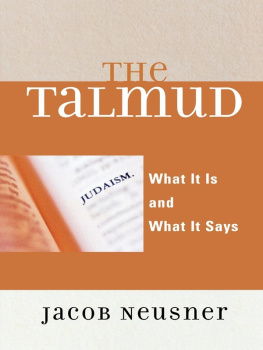
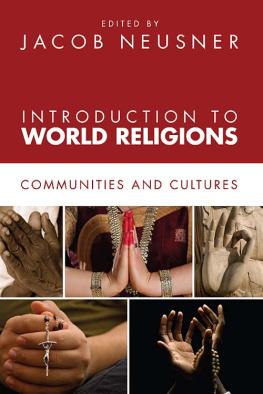
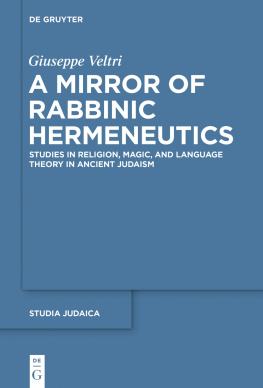
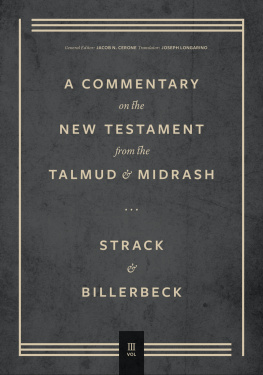
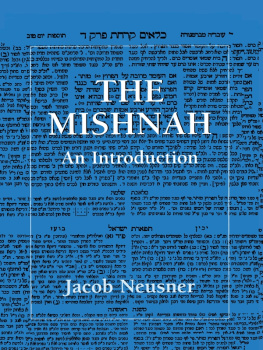
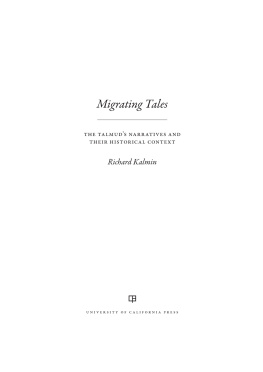

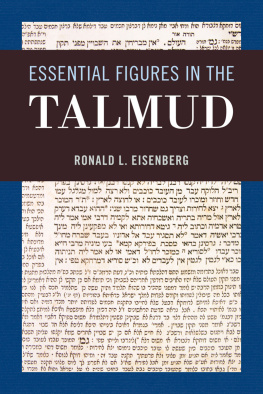
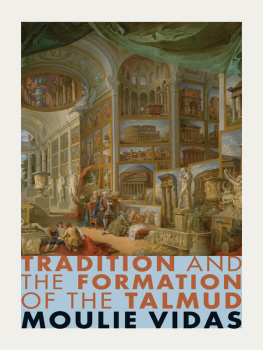


 The paper used in this publication meets the minimum
The paper used in this publication meets the minimum